Jun
01

"Nearly Wild" Rose
I have a beautiful rose that someone had given me a couple of years ago that is just now mature enough to bloom and I have no idea what it is. It looks like “Nearly Wild” but it has a climbing habit rather than bush. It is incredibly disease resistant and has a lovely sweet fruity scent.
If you know what rose this is, please drop a line in the comments and let me know!
-- Weather When Posted --
- Temperature: 84°F;
- Humidity: 42%;
- Heat Index: 84°F;
- Wind Chill: 84°F;
- Pressure: 29.86 in.;
Jun
01
What a great little market! Some friends and I went out to peruse some locally grown fare and I was pleasantly surprised by how much I found. There were local meat vendors, fresh eggs, honey, cheese, nuts and all sorts of crafts.
I ended up coming home with some honey, some of the most incredible organic blueberries, pecan brittle, jasmine Shea butter for my poor garden hands, mushrooms, a jar of “Sweet & Sour Lime” seasoning and a gorgeous organic head of cabbage. And there was not a single sign of a distributor warehouse presence.
I hope we can make our outing a regular event!
-- Weather When Posted --
- Temperature: 84°F;
- Humidity: 42%;
- Heat Index: 84°F;
- Wind Chill: 84°F;
- Pressure: 29.86 in.;
May
29
What a busy, crazy week! I’m so ready for school to be out! My garden NEEDS me.
Spring has taken it’s toll. All the rain has made for lots of bugs and mildew, black spot and WEEDS! As much as I love lemon balm, it is going to become a weed if I don’t get it cut back. The lambs ear is the same… baby lambs ears everywhere! The wild carrot should have been yanked out the minute I saw it, but there just always seemed to be something more important to do at the moment. I just found out that it is one of the most allergenic plants growing in my yard. That and Bermuda grass. I hate that stuff!
I think summer is officially here though… well almost. The sunflowers are not blooming yet, but other heat loving annuals and perenials are. The cannas are starting to open and the crape mytles are blooming (one of them, at least).
We went outside last night for just a minute and the scent of the jasmine just about made us swoon – and all from just three tiny flowers.
OK… so here is this weeks list:
- Roses
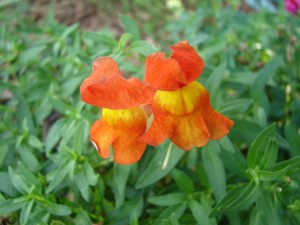
Snap Dragons
- Dahlberg Daisies
- Scarlett Sage
- Easter Lily
- Trailing Purple Verbena
- Elderberry
- Radish
- Tomatoes
- Peppers
- Lambs Ear
- Marigolds
- Borage
- Mealy Blue Sage
- Pentas
- Bear’s Breach
- Impatiens
- Red Oxalis
- Petunias
- Sweet Lavender
- Calibrochoa
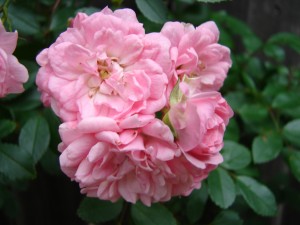
"Fairy" Rose
- Star Jasmine
- Santolina
- Snap Dragons
- Oxeye Daisies
- Passion Flower
- Nasturtium
- Purple Lantana
- Wild Carrot
- 4 O’Clocks
- Purple Crape Myrtle
- Cleome
- ‘Sweet Kate’ Spider Wort
- ‘Black and Blue’ Anise Sage
- Pomegranate
- Lemon Balm
- St. John’s Wort
- Wine Cups
- Cantaloupe
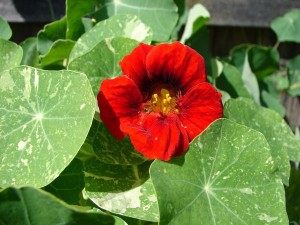
Nasturtium
- Prairie Phlox
- Cannas
- Pink Oxalis
- Bouncing Bet
- Summer Poinsetta (not really a bloom, but it’s turning red now)
- Purple Cone Flowers
- Esperanza
- Cucumbers
- Coral Honey Suckle
- Althea
- Buddleia
- Coleus (again, not a bloom, but a lot of color – several varieties)
- Russian Sage
- ‘Confetti’ Lantana
- Watermelon
- Bouncing Bet
- Yellow Daylily
- Sundrops
- Yellow Squash
- Zucchini
- African Daisy

Purple Cone Flower
- ‘Lil’ Business’ Daylily
- Asters
- Hollyhocks
- Geraniums
- Cosmos
- Snow Peas
- Strawberries
- Allysum
- ‘Australian Skies’ Anise Sage
- Autumn Coral Sage
- ‘Autumn Joy’ Sedum
- Ajuga
- ‘Green Mantle’ Yellow Sedum
-- Weather When Posted --
- Temperature: 86°F;
- Humidity: 28%;
- Heat Index: 86°F;
- Wind Chill: 86°F;
- Pressure: 30 in.;
May
29
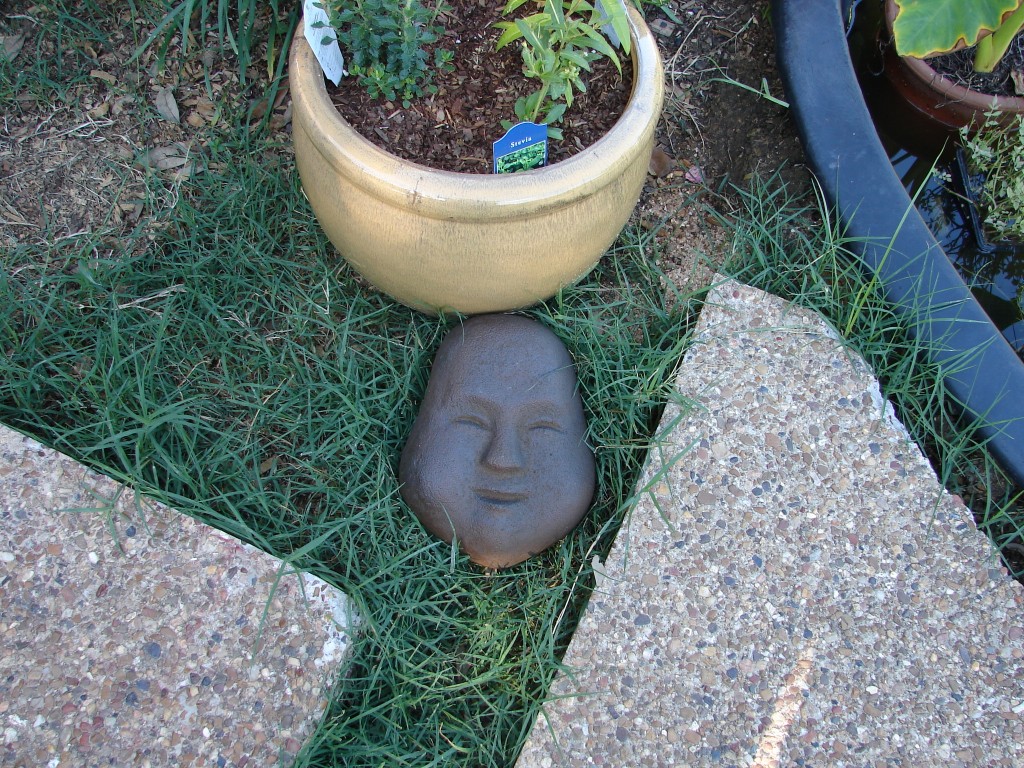
Happy Face
I found him at Pier 1 on clearance!
John thinks he’s creepy, but I think he’s fun. I also think John needs to stop letting little things creep him out so much.
I have debated returning him, but I think I really want to keep him!
-- Weather When Posted --
- Temperature: 87°F;
- Humidity: 26%;
- Heat Index: 87°F;
- Wind Chill: 87°F;
- Pressure: 30.05 in.;
May
29

Sam's Purple Crape Myrtle
Crape Myrtles (Lagerstroemia indica) are slow growing flowering trees or shrubs native to China. They come in all colors… pink, red, white, purple. OK, so there is not yellow, orange or blue there, but that is still an impressive array of colors, don’t you think? And they bloom all summer and on into the fall – even in our Texas heat and drought conditions. They like to be in full sun and some varieties can get quite tall – 25 feet. There are also dwarf varieties, but don’t get a tall one and try to make it stay small.
Crape Myrtles have gorgeous trunks. As they age, the bark peels off to reveal beautiful smooth skin that really shows up when they are bare in the winter.
The only problem with these trees is that they do succumb to mildew. Spring is hard on them for that reason, but they respond very well to foliar feeding and baking soda spray. Well, and then there is the problem of suckers coming up around them, but that is easy to deal with. You just have to prune the suckers out.
There is an old wives tale that says you should whack the tar out of the poor tree in the winter to get it to produce more flowers in the summer. Don’t do it. It doesn’t work, it looks stupid and it’s hard on your tree. Anyway, the birds love the seed pods and they are pretty through the winter.
This particular crape myrtle is Samantha’s. We stated a really bad habit when she was little. Anytime we went to a plant nursery, we let her pick out a flower. When she was about 3 years old, she saw this tree at Calloways (in a 1 gallon pot) and carried the silly thing through the entire store saying “I can do it!” It was more than we usually let her spend, but how could we say no to that?
-- Weather When Posted --
- Temperature: 80°F;
- Humidity: 40%;
- Heat Index: 80°F;
- Wind Chill: 80°F;
- Pressure: 30.08 in.;
May
27
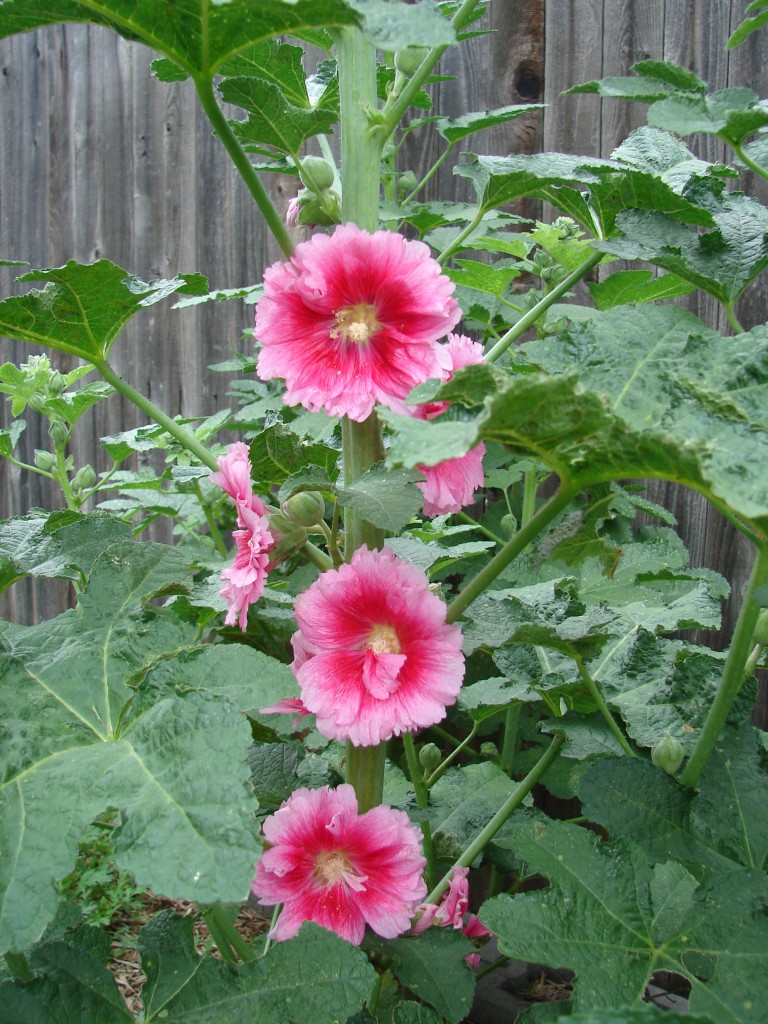
Hollyhocks In A Row
Hollyhocks (Alcea) are perennials that have multiple flower buds on tall central stems (as much as 6 feet) . They are gorgeous at the back of a border along a fence. That is also a good place for them because aphids love to chew up the leaves. You can stop that somewhat by spraying the plants with Garlic/Pepper tea but that might kill the Painted Lady caterpillars that like to munch the leaves also so I just live with ratty leaves and as many ladybugs as I can encourage into my garden. Besides, it doesn’t seem to affect the flower production.
Hollyhocks are originally from Asia, but have basically traveled the world. They do best in full sun most places, but need afternoon shade here in Texas – well, in my yard at least. They are very drought tolerant and reseed readily. The seedlings have long tap roots that make it difficult to transplant, but I have managed it with very small seedlings.
Hollyhocks also make great cut flowers. They will last even longer if you singe the bottom of the stalk before putting them in water.
On quick fun fact… hollyhocks are edible. The blooms can be filled with cream cheese, guacamole, hummus or anyother kind of filling you can think of – even sherbert or ice cream!
-- Weather When Posted --
- Temperature: 78°F;
- Humidity: 45%;
- Heat Index: 79°F;
- Wind Chill: 78°F;
- Pressure: 29.83 in.;
May
27
Robert Louis Stevenson (England, nineteenth century)
The Flowers
All the names I know from nurse:
Gardener’s garters, Shepherd’s purse,
Bachelor’s buttons, Lady’s smock,
And the Lady Hollyhock.
Fairy places, fairy things,
Fairy woods where the wild bee wings,
Tiny trees for tiny dames–
These must all be fairy names!

Light Pink Hollyhock

Double Pink Hollyhock
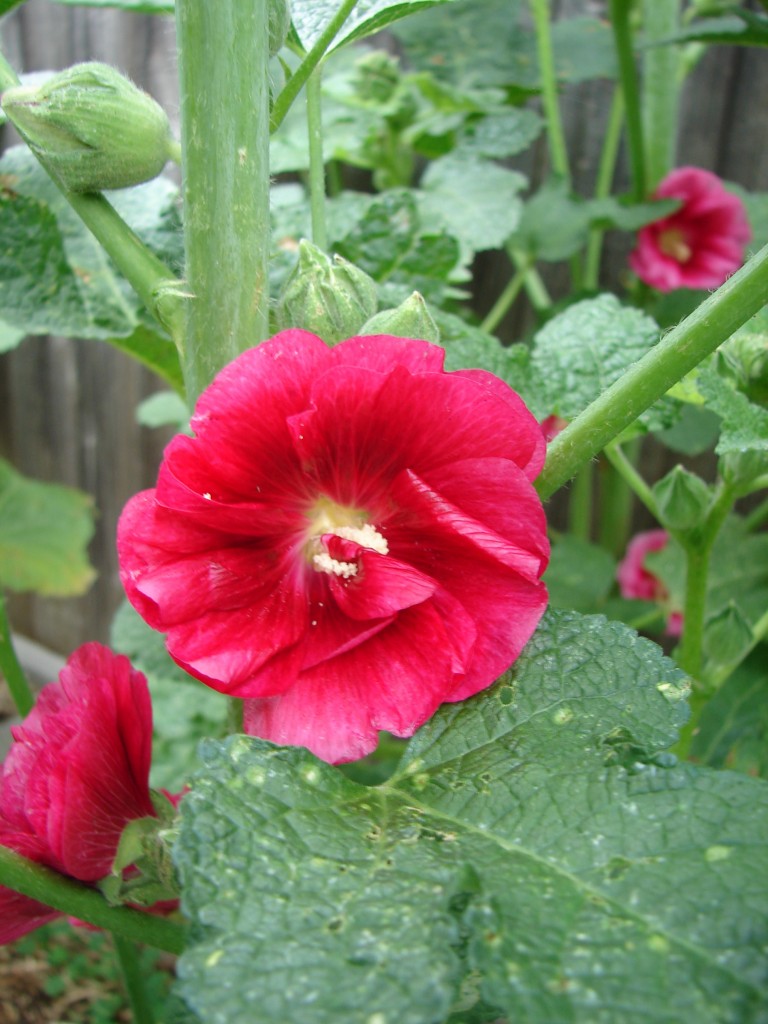
Crimson Hollyhocks
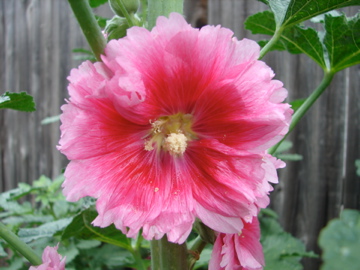
Dark Pink Hollyhocks

Light Pink Hollyhocks
-- Weather When Posted --
- Temperature: 78°F;
- Humidity: 45%;
- Heat Index: 79°F;
- Wind Chill: 78°F;
- Pressure: 29.83 in.;
May
27
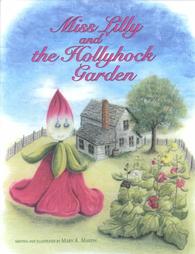
Miss Lilly and the Hollyhock Garden
Samantha got this book for her birthday several years ago and it is still one of our favorites. The pictures are all of hollyhock dolls.
The story was wonderful. It was about a hollyhock doll that was blown away out of her garden and had the help of many friends to get back. At the back of the book, was a not to send away to the author for hollyhock seeds. We did and they are still growing in our garden year after year.
You can actually make your own hollyhock dolls. Samantha and I have made many, but they are rather fragile and have not lasted until we could get the camera to take their picture. We’ll have to go make more!
-- Weather When Posted --
- Temperature: 79°F;
- Humidity: 43%;
- Heat Index: 79°F;
- Wind Chill: 79°F;
- Pressure: 29.85 in.;
May
27
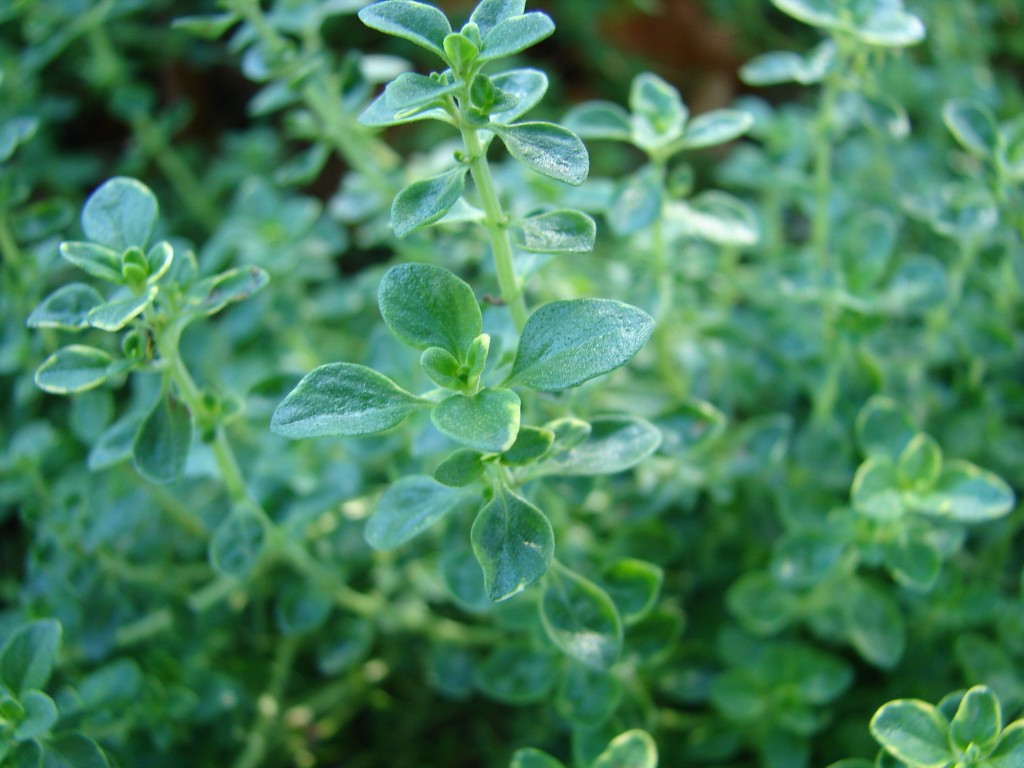
Lemon Thyme
Thyme is incredible stuff! So is time, but thyme it one of my favorite seasonings for eggs and it is especially good fresh. I have grown creaping thyme, lemon thyme, wooly thyme and regular common thyme. My favorite by far is the lemon thyme. That is also the one that has done the best in my garden. It has stood up to people, dogs, cats and chickens; winters and summers; flood and drought.
Thyme has a long history. It was thought to be a cure for “melancholy” by the Romans and it was a symbol of courage for the Greeks. The ancient Egyptians used it for embalming. It’s origin is probably Greece (and other Mediterannean areas?) since the name is from the Greek word thymos meaning “smoke” or “spirit.
There are about 350 species of thyme and a lot more hybrids and cultivars. I has also been used medicinally as an antiseptic, antibacterial and antifungal herb. Thyme leaves hold their flavor very well when dried, but I still like it best fresh and, since it is an evergreen in Texas, I don’t have to settle for anything else. The highly aromatic leaves and flowers are used in all kinds of food and teas. Thyme has been used in ethnic cuisine all over the world.
The plant is a very drought tollerant plant for full sun. It has tiny star shaped flowers (red, pink or white) through the summer. Mine just finished a spring bloom and are gearing up for a more steady bloom over the summer. There are upright versions, like this one, and there are creeping versions which are great between pavers. They release a wonderful fragrance any time some one steps on them. I need to get more of the creeping varities to plant between the pavers in my new path! If it gets enough sun there…
Oh… and the bees love it!
-- Weather When Posted --
- Temperature: 79°F;
- Humidity: 43%;
- Heat Index: 79°F;
- Wind Chill: 79°F;
- Pressure: 29.85 in.;
May
26

St. John's Wort
St. John’s Wort (Hypericum) is famous for it’s pharmaceutical properties and it’s uses as an herbal treatment for depression. There are over 300 species of Hypericum and I have no clue which one this is. I think it’s a gorgeous plant, though. It makes a mounding evergreen shrub about 3 feet tall and it will be loaded with pretty yellow flowers all summer long and the leaves will turn sort of red in the fall and winter. Even though it is an evergreen in my yard, it is considered a perennial herb.
St. John’s Wort is very easy to grow and I have had great success in starting cuttings from it. Mine gets part shade, but it can take full sun also.
St. John’s Wort was originally from Europe and it is considered a toxic and noxious weed in some areas. It is not, however,

St. John's Wort
listed as an invasive species for Texas and, in fact there are even three species of Hypericum that are listed as being native to Texas. Mine does not appear to be one of the native ones – it appears to be Hypericum patulum henryi or “Golden Cup” St. John’s Wort.
-- Weather When Posted --
- Temperature: 95°F;
- Humidity: 31%;
- Heat Index: 95°F;
- Wind Chill: 95°F;
- Pressure: 29.65 in.;



















